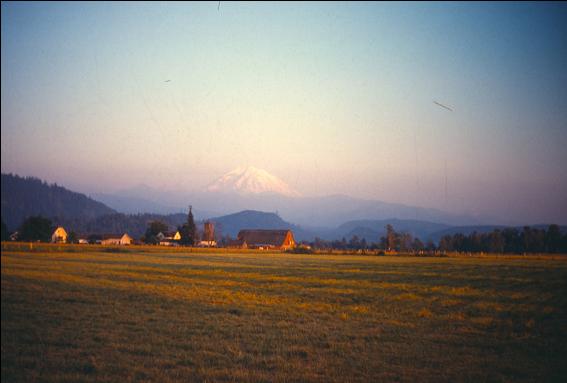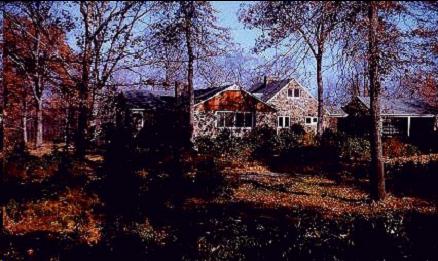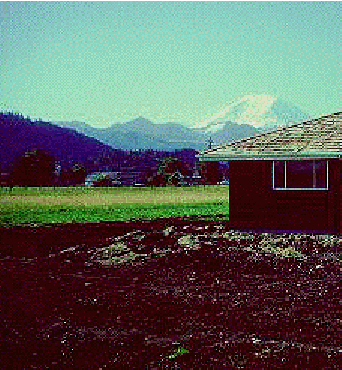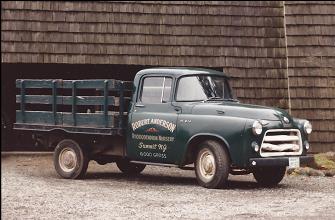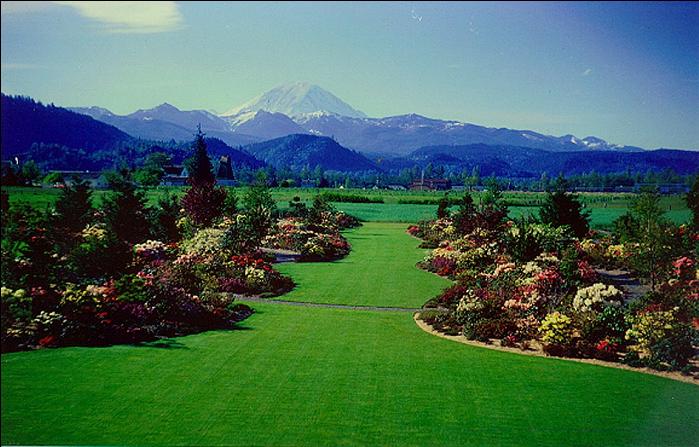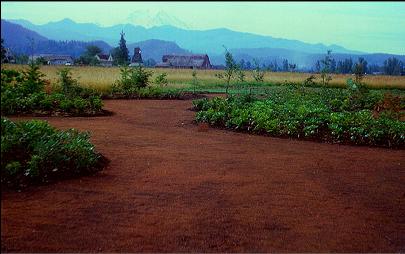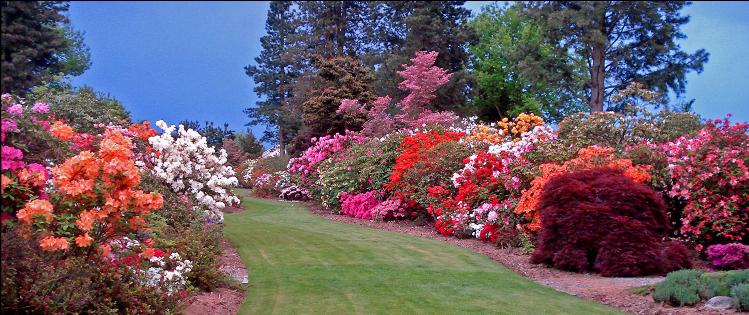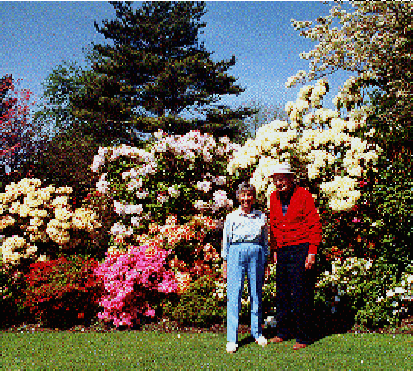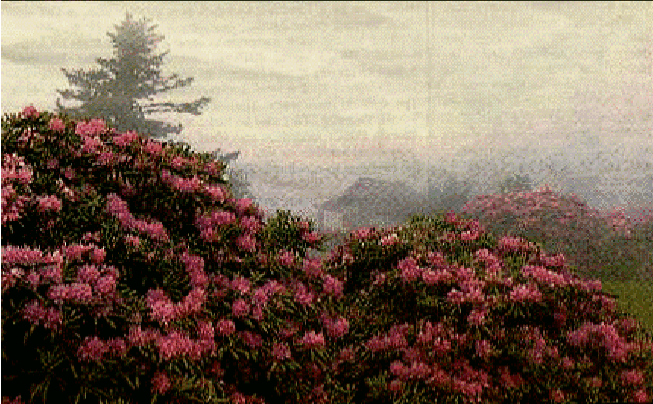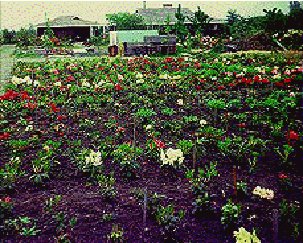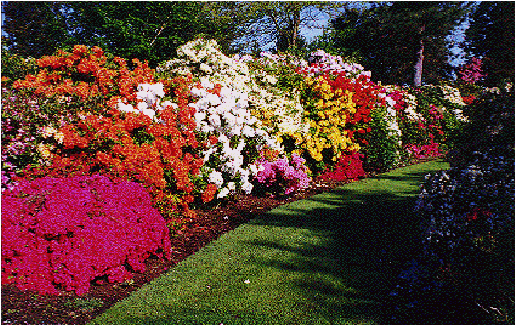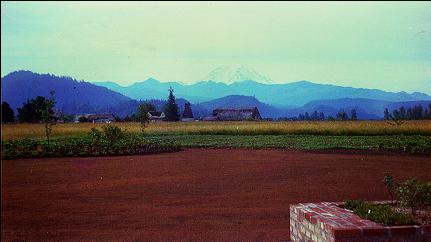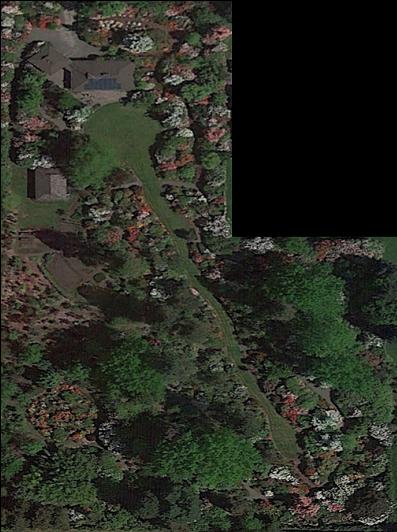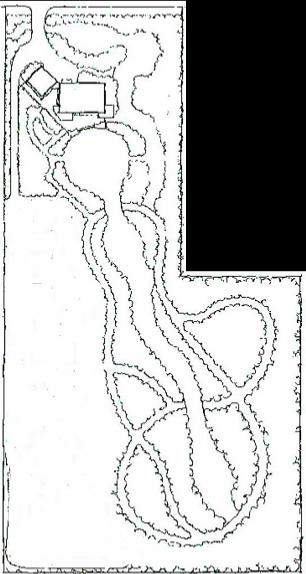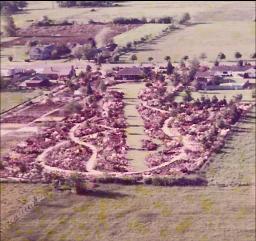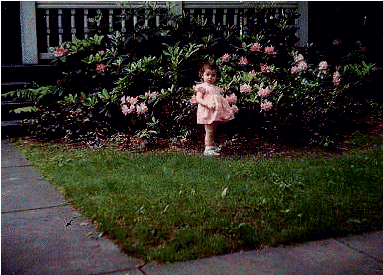History of the Anderson Garden--Since 1962
Bob and Betty Anderson in 1993, a year before he died and thirty-one years after they began creating the garden
But Bob had read that the Pacific Northwest climate was ideal for cultivating a wider variety of his favorite plants. He had also read about Buckley loam, a rich, black volcanic soil deposited by Mt. Rainier several thousand years ago. So in the mid-1950's, he rode a Greyhound bus from New York City to Seattle, took the local transit to the end of the line in Enumclaw, and walked the rest of the way to Buckley. Bob loved the dirt but couldn't find the site he was looking for and returned to Enumclaw discouraged. Since there was only one bus a day, he had several hours to wander around. He loved Enumclaw, and found the same world-famous loam. The following year he returned and bought a five acre hayfield at the edge of town.
Bob and Betty were in their fifties when they packed everything they could fit into their nursery truck and headed to the Pacific Northwest.. In the first year, Bob designed the house (he let someone else build this one) and drew up the garden plans, while Betty taught school. In 1962 they moved in and began their transformation of the hayfield and their second rhododendron park.
The garden design reflects influences of northeastern, southeastern (Bob is originally from the mountains of North Carolina) and northwestern styles, and integrates elements of British and Japanese gardens. Bob's training in landscape architechiture at Penn State gave him the technical skills to translate his unique vision into an arrangement of living plants.
One of the most distinguishing features of the garden is its color composition. Bob was an oil and watercolor painter for most of his life, and studied for years at the Art Students' League in New York City. In selecting combinations of plants, Bob paid careful attention to size and blooming season, but he also visualized patterns of color many people would not attempt. But as in an oil painting, two colors that would not seem to mix exhibit a special beauty in the presence of a third. In the garden, he painted from an extensive palette in his mind, able to see how his brush strokes would appear years later.
Over the years, Bob collected more than a hundred species and four hundred different hybrids of rhododendrons (including azaleas.) To provide the several thousand plants needed to complete the garden, he propagated them from cuttings in Nearing frames. Complementing these were hundreds of companion plants--trees, shrubs, and flowers--carefully chosen for form, leaf texture, color, and compatibility.
Because much of the garden came from cuttings, it matured slowly over the years. In the 1960s, the lawn and beds stepped their way outward to the back line. The young garden was sunny and open. In the 70s, the planned contours emerged as different plants grew at different rates. Trees began providing a little shade. By the 1980s, they were large enough to give much of the garden the woodland setting that has characterized it since.
In the 1940s and 50s, Bob and Betty Anderson hand-crafted a large stone house and created an eight acre rhododendron park in Springfield, New Jersey.
Left--original plan,
1961
Above--from the air,
1974
Right--Google Earth,
2018
But the history of rhododendrons in the family goes back long before the gardens in Enumclaw and New Jersey.
During the first decade of the 1900s, John Anderson (my grandfather) studied under Gifford Pinchot, the first head of the newly formed US Forest Service. Upon John's graduation, Gifford hired him to tour the country promoting conservation. In his travels, John discovered Black Mountain, North Carolina, and settled down there when son Robert was born.
Native Carolina rhododendrons grew wild in the surrounding Appalachian mountains, but also in local farmers' fields. Cows would eat them and become sick. So John offered to dig up the bovine-pruned shrubs, and then shipped them by the boxcar load to New Jersey, where he sold them to landscapers and the highway department. The family then moved up there, but he continued his rhododendron shipping business. The seed was planted for the later Anderson Gardens.
My sister, Nancy
Mt. Holly, NJ 1939
